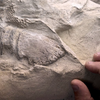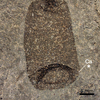The Biggest Dinosaurs to Walk The Earth

A cast of Scotty, the largest T-Rex yet discovered. (image credit: Amanda Kelley)
Post Author - Peter Bashaw
For 165 million years across the Mesozoic Era, dinosaurs reached incredible, towering sizes, but curiously the evidence suggests the largest came at the end of the Age of Dinosaurs. This may seem ironic. After all, larger animals have smaller populations and require more food, thus making them susceptible to environmental stresses. On the flip side, if a large animal is able to survive a mass die-off, their genetic predisposition to a large size will quickly spread in a reduced population. This is what we see in the Late Cretaceous: dinosaurs of many different clades reaching their apex.
Among the already massive sauropods, Argentinosaurus was a cut above, weighing around 73 tonnes with a length of around 120 feet, the largest confirmed land animal across the entire fossil record. The largest ornithischian was the Shauntongosaurus, with a length of 50 feet, capable of holding its massive bulk on just its two rear legs. As for the mighty theropods, they reached their peak with the iconic Tyrannosaurus, the largest specimen being a T-Rex named Scotty, measuring 43 feet long and weighing around nine tonnes. Don’t let those stubby arms fool you, Tyrannosaurus was the largest completely bipedal dinosaur in the whole fossil record!
A large size isn’t everything, of course. When the K/Pg extinction arrived, it was the small, mobile dinosaurs that were able to survive while the giants died out. Today, birds have a vast size range, from the nine-foot-tall common ostrich to the bee hummingbird, which measures under two and a half inches in length. One wonders if dinosaurs would have continued to balloon in size had their extinction not come, but for the time being today’s dinosaurs seem satisfied taking on what size their environment calls for.
Featured Product
Joe Frazier Boxing Glove
Cool Things!

Is “Paul is Dead” Dead?: Unpacking One Of Pop Culture’s Most Enduring Conspiracy Theories

Scientists Discover Hooves and Skin in Preserved Dinosaur "Mummies!"
A dinosaur discovery just in time for Halloween! In a new analysis of a group of fossils from Wyoming, Scientists have determined this group of fossils are dinosaur “mummies,” with preserved skin and even hooves.

Scientists Record a Bat Catching Birds Mid-Flight!
Bats, birds, screeches, oh my! In a reverse-Hitchcock twist, a new study reveals that a species of European bat catches and eats birds mid-flight.
Specimen Deep Dives

The House that Ruth Built: The Story of the Old Yankee Stadium

The Queen of the Skies: the Story of the Boeing 747

Old Ironsides: The USS Constitution and the Start of the U.S. Navy
Long Form Articles

The Artist Behind the Macintosh: Susan Kare and Apple Computers
While the two Steves, Jobs and Wozniak, are the most well known faces behind Apple computers, equally important to the products and culture of the company were those who crafted the experience of using their computers through design. The most notable of these visual architects was Susan Kare, a designer responsible for “humanizing” Macintosh computers.

Can I Lick It? Yes You Can!
Have you ever been unable to tell if a fossil was really a fossil, but you were too embarrassed to admit it? Have you ever wanted to lick a fossil just because, but you didn’t want to risk judgment from your peers? Well, good news! You can kill two birds with one stone! Licking a fossil can actually help you determine if it’s the real deal or just another rock.

Is It Legal To Own a Meteorite: How to Start Your Outer Space Collection!
Meteorites are some of the rarest geological specimens to be found on Earth. Of course, since these stones are not of our world, purchasing them can sometimes be a confusing process. Is it legal to own a meteorite? In short, yes! Read on for help starting your cosmic collection!


















